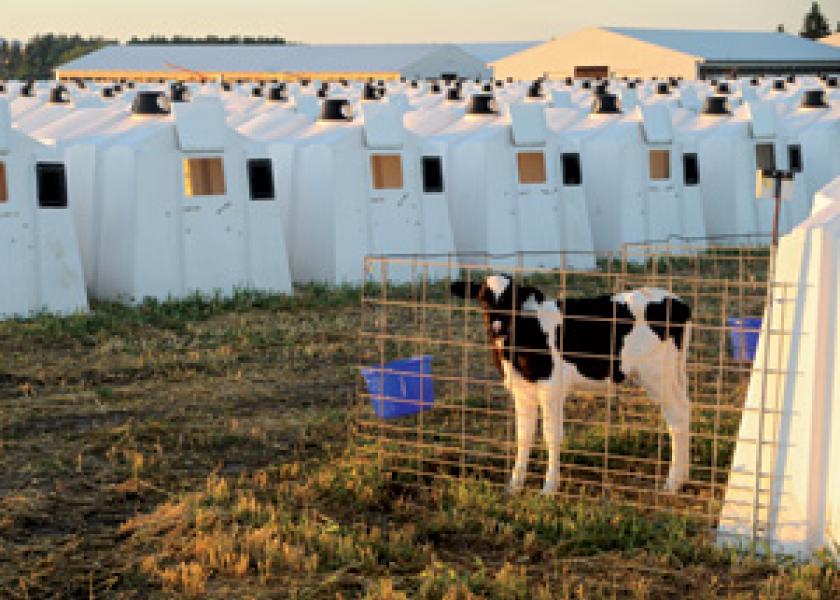The BRD Bugaboo

Is treatment worth the cost?
Bovine respiratory disease (BRD) is one of those insidious, invisible drains on calf health and cash flow.
Infected calves may cough a few times, even develop full-scale pneumonia, but they eventually recover and go on with their lives. Or so it seems.
Research shows that BRD-infected calves are poor doers, have reduced rate of gain, are 40 lb. lighter at breeding age, are at greater risk of culling, calve later and have more dystocia.
Bonus Content |
| Partial budget of BRD treatment cost/benefit |
Putting a cost on all of these factors has been difficult. Until now.
Amy Stanton of the Department of Population Medicine at the University of Guelph in Ontario has developed an easy-to-use partial budget that compares the cost of the disease versus early treatment with antibiotics.
Based on industry-wide data, Stanton calculates the cost to treat is $12. The cost of long-term effects of BRD—including death loss, early culling, increased time to first calving and increased risk of problems at calving—comes to $92 if there are excess heifers in the herd, or $276 if death losses require the purchase of replacement heifers.
But don’t take her word for it. The budget can be customized by plugging in your disease incidence and costs.
BRD is a complex of diseases, any one of which can cause respiratory problems, reduce immunity and make calves susceptible to other conditions. Diseases usually included in the complex are parainfluenza 3 virus, BVD and infectious bovine rhinotracheitis (IBR). Vaccination for these diseases is recommended, but by itself won’t ensure protection.
Risk factors include poor colostrum management (colostrum fed late or low serum total protein levels); diarrhea; preweaning groups of 10 or more calves; wet bedding; poor ventilation (with ammonia levels greater than 5 parts per million); drafty housing; the season of year; and stress at weaning (due to feed changes, regrouping, dehorning and transportation).
Research in herds from Ontario, New York and Florida suggests the rate of BRD infection is 15% to 20% of calves. Identifying infected calves, especially early, is difficult.
Treat or not? Year-round preventive treatment isn’t generally recommended. Stanton does, however, recommend treatment during periods of high risk. Most farms have the greatest risk in fall and winter.
"At the first sign of BRD, we recommend treating the whole group of calves," she says. It’s an almost foregone conclusion that if one calf is infected, all will be exposed.
"Using this approach 25% of the year, when the majority of BRD occurs, would cost $2,000 for treating 250 calves. If this reduced the yearly incidence by 7%, it would reduce the cost of BRD from $54,000 to $35,000. The total savings would be $17,000 if additional heifers are not required to replace heifers lost to BRD or about $5,000 for growing herds that need to buy replacements.







